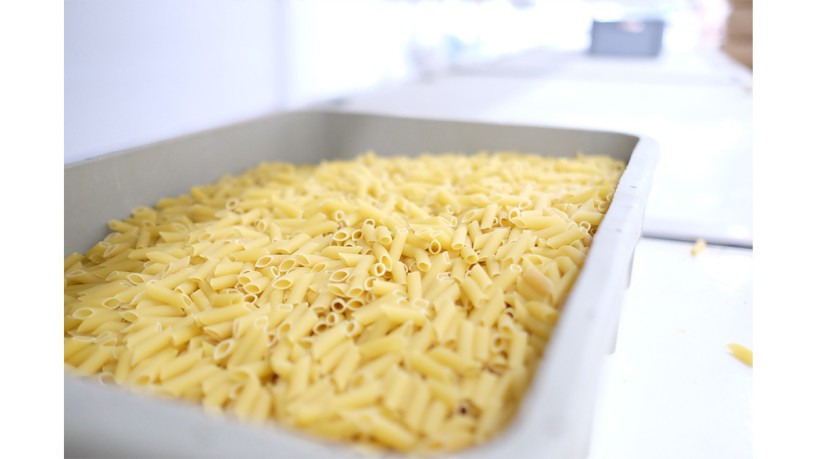Focus on the circular economy
The need to move towards a resource-efficient circular economy also affects the packaging industry. This applies in particular to packaging for fast-moving consumer goods (FMCG), which includes most food products. FMCG packaging has a short use phase of a few days or weeks and symbolises today’s throwaway society which is also known as the linear economy and is often described as “take-make-waste”.
European policymakers are responding to environmental challenges with a variety of roadmaps and resulting legislation, including the European Green Deal. One aim of the Green Deal is to develop measures to combat unnecessary packag¬ing in order to reduce waste. To promote the circular economy, the Circular Economy Action Plan (CEAP) is a central ele-ment of the Green Deal. The CEAP aims to decouple economic growth from resource use and at the same time ensure the EU’s long-term competitiveness. In line with the aim of the Green Deal to combat unnecessary packaging a proposal for a new European regulation on packaging and packaging waste (PPWR) has emerged from the CEAP.

Illustration of regulations ©gruesser
Challenges and limitations
In the context of food packaging, too few recyclates are authorised for food contact in order to establish a circular economy. In addition, the complete and separate collection and material recovery of postconsumer waste is particularly challenging. Mixed postconsumer plastic waste from the yellow bin (applicable to Germany) must be sorted into different material streams. Due to additives and impurities, sorting is sometimes difficult and postconsumer plastic waste is often processed into lowgrade recyclate. Advances in sorting technology based on digitalisation, robotics and artificial intelligence could improve mechanical recycling, but are not yet widespread due to higher costs. Alternatively, chemical recycling offers the opportunity to break plastic down into its basic building blocks, which can then be used as a starting material for new plastic or for the chemical industry. This technology has the potential to convert plastic waste that is difficult or impossible to recycle into highquality products, but is still under development.
Summary and outlook
Against the backdrop of ecological necessity and the associated global challenges, such as the increasing volume of waste and the scarcity of finite resources, a change from a linear economy to a circular economy is imperative. This applies in particular to FMCG packaging, such as food packaging, which, due to its short use phase symbolise today’s throwaway society and therefore a linear economy. A circular economy offers the potential to reduce the use of primary resources, waste generation and the associated potential environmental impacts. However, in view of the scarcity of finite resources, the circular economy does not lead to independence from finite resources due to losses during the recycling process and the use of fossilbased energy sources. To address this limitation, a combination with a complementary alternative economy – the bioeconomy – is required. Equally important is the provision of improved product information for consumers. It remains to be emphasised that even with the transition to a circular economy, there is a fundamental need to significantly reduce the overall consumption of natural resources for sustainable development.
Furthermore, especially in the context of food packaging, appropriate regulatory and technical framework conditions must be created in order to overcome the challenges already discussed with regard to the use of recyclates in food packaging. The entire product packaging system must always be considered when designing food packaging, taking into account the desired waste reduction, minimisation of potential environmental impacts and conservation of resources. The waste hierarchy and/or recyclability must not take precedence over the functionality of the packaging. Significantly more resources are tied up in food than in its packaging. If, for example, the functionality of the packaging is impaired by the design for recycling, this can result in higher potential environmental impacts than nonrecyclable packaging if packagingrelated food wastage increases. Even dispensing with functional packaging in the sense of the first stage of the waste hierarchy – prevention – can result in more potential environmental impacts when considering the product packaging system and taking into account the resulting food wastage than were saved by the avoided packaging. The first stage of the waste hierarchy can also be seen in the avoidance of food wastage, which often does not go hand in hand with the avoidance of packaging. Recyclability is not the same as the level of sustainability of the packaging. Considering this aspect alone distorts the results and, in case of doubt, can lead to more unfavourable potential environmental impacts and thus fail to achieve the goal of reducing environmental impact. Whether functional food packaging, even if it is not recyclable, is associated with lower potential environmental impacts requires an individual assessment. Sustainability assessment methods such as the Life Cycle Assessment, Life Cycle Costing or a Social Life Cycle Assessment can be used for this purpose.
Sustainable innovations
The challenges facing a circular economy in the food packaging industry emphasise the need for research in this area. In the context of this research, a holistic view of product and material cycles across their life cycle and their dependencies on other cycles is a fundamental prerequisite for sustainable innovations. This includes the consideration of ecological, economic, technological and social aspects. In addition to research, the transition to a circular economy also requires a process involving society as a whole. Active dialogue in all areas of society plays a decisive role in promoting understanding and acceptance of the circular economy. This includes intensive technical discussions between experts from business, science, politics, the media, environmental and consumer protection organisations as well as at national and local level. A collaborative, crossvalue chain approach is therefore needed to achieve a circular economy.
DLG expert knowledge is available free of charge at: https://www.dlg.org/en/food/topics/dlg-expert-reports/food-technology




